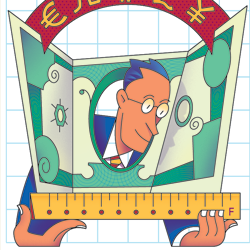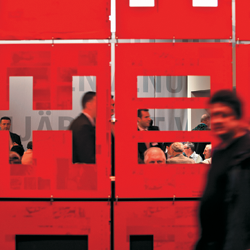 What a great question! The answer, of course, is an unequivocal "yes and no!"
What a great question! The answer, of course, is an unequivocal "yes and no!"
On the one hand, the environment doesn't care what your intentions were. Your show program simply has a smaller footprint. Fewer people traveled, less stuff hit the road, and fewer resources went into production.
But this doesn't mean your company is any Greener today than it was before, and that's important. Given a brighter economy, would your show program pick right back up again? Would you operate it any differently than you always have?
If the answer comes back sounding like business as usual, then your company's Greening was just a matter of circumstances. Crowing about it will set you up for charges of greenwashing, and rightfully so.
Go big or go home!
Consider the story in last December's EXHIBITOR magazine about the German printing equipment company Heidelberg Druckmaschinen AG's presence at Drupa 2012. Heidelberg's story answers your question in some revealing ways.
Like your company, Heidelberg reduced its show presence because of a budget cut – 50 percent vs. the same show four years earlier. As a result, they trimmed their space by 20 percent and, therefore, reduced the amount of product on the floor by the same amount.
Drupa is a quadrennial European show, and exhibitors go all out at these events. So Heidelberg's smaller exhibit still covered a vast 86,000 square feet. At this scale, a 20-percent cut in space and printing equipment reduced the exhibit's overall weight by 33 percent – a whopping 100 tons.
Should Heidelberg get Green credit for these reductions?
Heidelberg enjoyed another happy accident, too. Drupa 2012 was held in Dusseldorf, which is just 180 miles from the company's offices. This adjacency allowed them to transport 130 staffers to the show in buses, which was Greener than putting 130 private cars on the road or 130 airplane seats in the air.
Should Heidelberg get Green credit for its lucky adjacency to the show? After all, companies that are located elsewhere in the world can never match this move.
The Green you choose vs. the Green that chooses you.
The answer, I think, lies in the ways Heidelberg approached the situation. For example, nothing about the show's locale forced them to transport executives and staff in buses, or house them in hotels near public transportation stops.
Nothing in these circumstances told them which contractor to hire. But after a thorough evaluation of bidders' sustainability records, they chose a contractor in Dusseldorf and elected to rent the majority of their booth properties. This slashed both construction and shipping.
Nothing about their location forced them to use found objects – 3,000 used printing plates – in construction, or replace many energy-intensive product demos with videos, or shut the lights off after the show closed each day, or sort recyclables on site, or measure their total carbon footprint and purchase offsets.
This company challenged itself to meet its marketing objectives while slashing its environmental footprint at the same time. They didn't just take credit for the accidents that were handed to them. They capitalized on those fortunate accidents and embraced Green practices that they can use at future events, no matter what the budgets or show locations turn out to be.
Seize the day!
Perhaps that's the biggest lesson in this story: In marketing we plan our moves. We plan our objectives, the impressions we create, our budgets and logistics. But sometimes, happy accidents just fall in our laps. What we do with those opportunities says a lot about our companies. Many simply take the windfalls and move on.
The smartest companies see accidents as opportunities to raise their game and change their plans. Heidelberg, for example, achieved impressive sales results in a smaller footprint and won a prestigious design award in the process.
They turned a negative into a win-win for their brand and the environment. In the end, isn't that what Green exhibiting is all about?




 My company cut some shows last year for budget reasons and wants to claim that we're Greener now. Do you think it's honest to say we're Greener if that wasn't the true motivation behind our decision?
My company cut some shows last year for budget reasons and wants to claim that we're Greener now. Do you think it's honest to say we're Greener if that wasn't the true motivation behind our decision? What a great question! The answer, of course, is an unequivocal "yes and no!"
What a great question! The answer, of course, is an unequivocal "yes and no!" 


